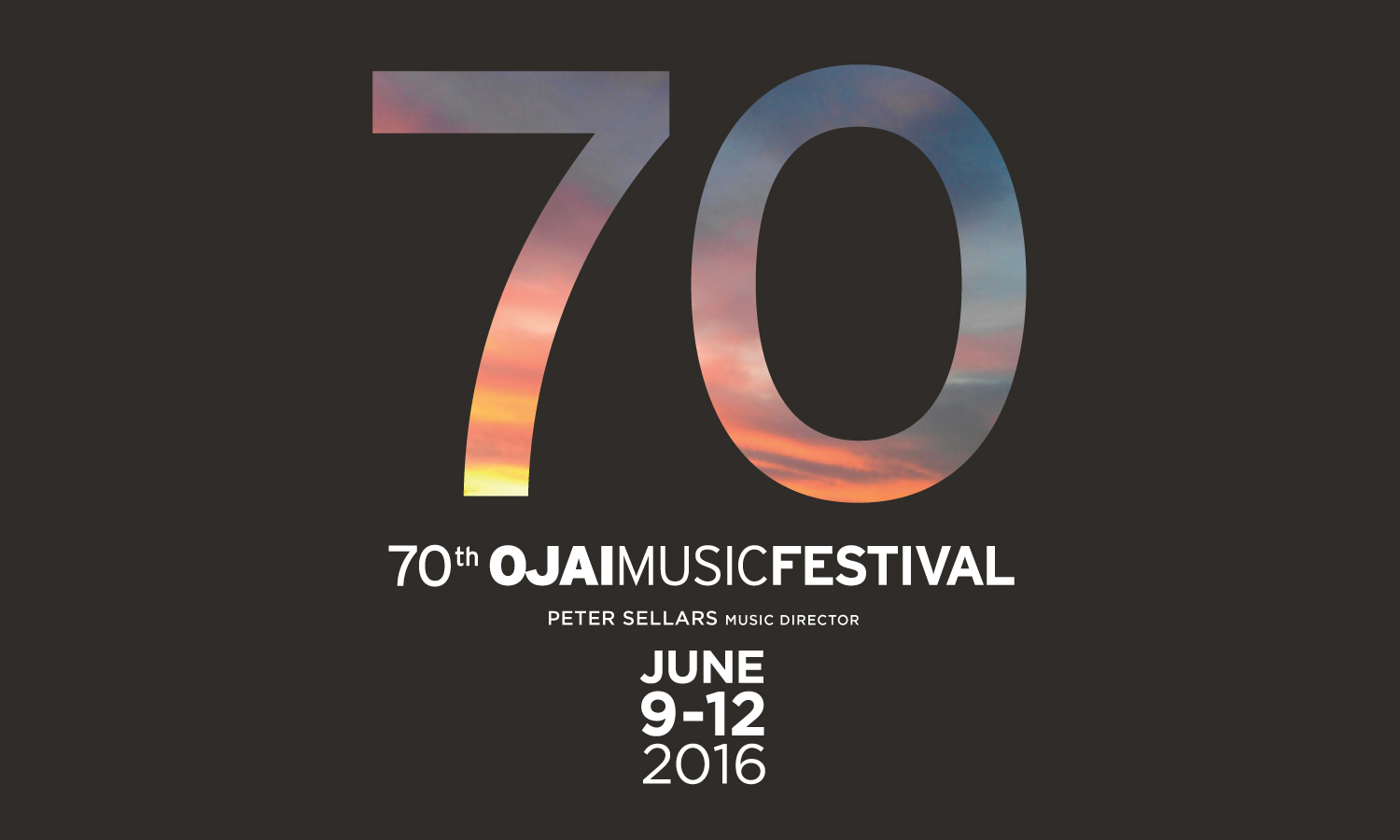Jennifer Koh, violin
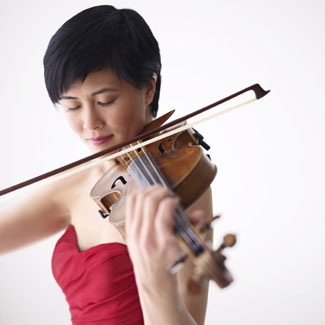
 Violinist Jennifer Koh is recognized for her intense, commanding performances, delivered with dazzling virtuosity and technical assurance. With an impassioned musical curiosity, she is forging an artistic path of her own devising, choosing works that both inspire and challenge. She is dedicated to performing the violin repertoire of all eras from traditional to contemporary, believing that the past and present form a continuum. She is also committed to exploring connections in the works she performs, searching for similarities of voice among diverse composers and associations within the works of a single composer. For her forward-thinking approach to classical music, presenting a broad and eclectic range of repertoire and fostering multidisciplinary collaborations with artists of all types and styles, Ms. Koh has been named Musical America’s 2016 Instrumentalist of the Year.
Violinist Jennifer Koh is recognized for her intense, commanding performances, delivered with dazzling virtuosity and technical assurance. With an impassioned musical curiosity, she is forging an artistic path of her own devising, choosing works that both inspire and challenge. She is dedicated to performing the violin repertoire of all eras from traditional to contemporary, believing that the past and present form a continuum. She is also committed to exploring connections in the works she performs, searching for similarities of voice among diverse composers and associations within the works of a single composer. For her forward-thinking approach to classical music, presenting a broad and eclectic range of repertoire and fostering multidisciplinary collaborations with artists of all types and styles, Ms. Koh has been named Musical America’s 2016 Instrumentalist of the Year.
Steve Lehman, saxophone
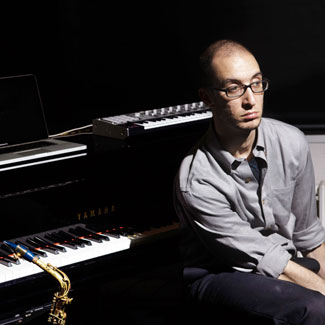

Described as “a state-of-the-art musical thinker” and a “dazzling saxophonist,” by The New York Times, Steve Lehman (b. New York City, 1978) is a composer, performer, educator, and scholar who works across a broad spectrum of experimental musical idioms. Lehman’s pieces for large orchestra and chamber ensembles have been performed by the International Contemporary Ensemble (ICE), So Percussion, Kammerensemble Neue Musik Berlin, the JACK Quartet, the PRISM Saxophone Quartet, and the Talea Ensemble. His recent recording, Mise en Abîme (Pi, 2014) was called the #1 Jazz Album of the year by NPR Music and The Los Angeles Times. And his previous recording, Travail, Transformation & Flow (Pi, 2009), was chosen as the #1 Jazz Album of the year by The New York Times.
From New York: Tom Morris Shares an Inside Look into Rehearsals
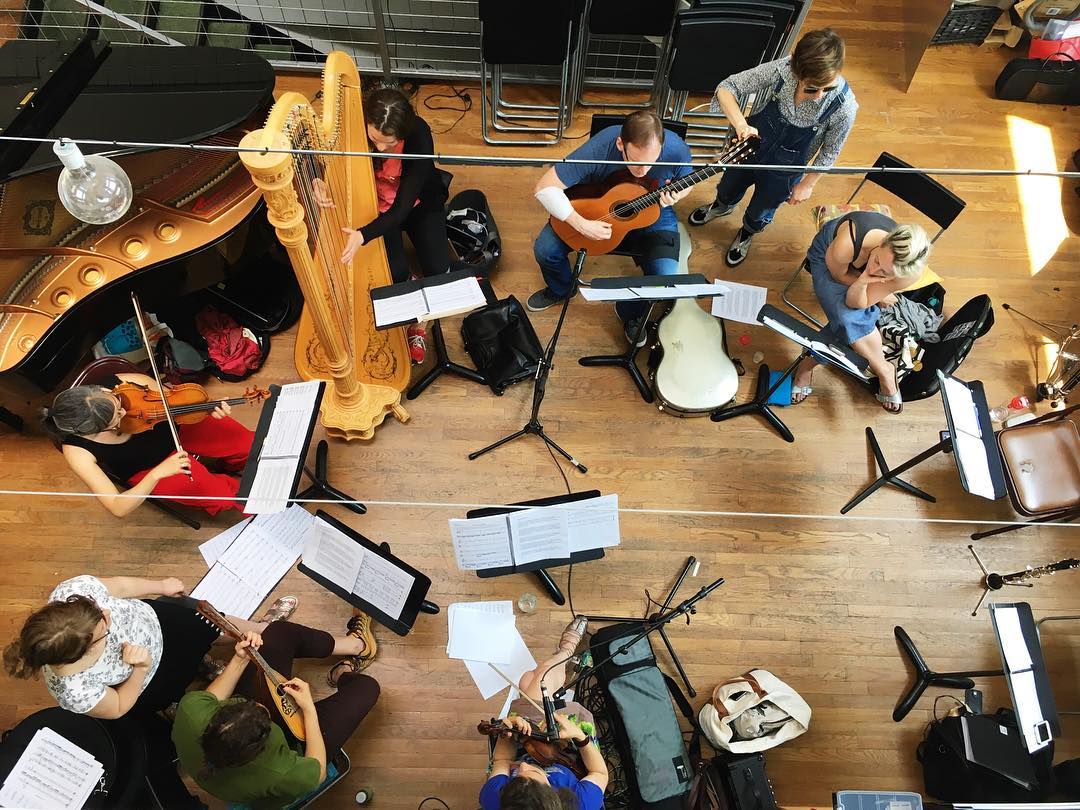
May 27, 2016
I spent the last day at our first rehearsals in New York for Ojai 2016. Most of artists are in New York so it is most efficient to do much of our preparation work there. We will be holding rehearsals there through June 1, and then the artists then come to Ojai June 3 to resume preparations June 4.
Yesterday started with a rehearsal for Josephine Baker A Portrait at ICEhaus, ICE’s home in Brooklyn. Soprano Julia Bullock has long been an advocate of Josephine Baker, the astonishing black American singer who in 1925 emigrated to Paris and became one of the most famous entertainers in the world. For Ojai, Peter Sellars and Julia Bullock have devised a very unique musical portrait of this remarkable artist with new and mind-bending arrangements by composer/drummer/trombonist/pianist Tyshawn Sorey. I first heard of Tyshawn from Vijay Iyer in planning for the 2017 Ojai Festival. Claire Chase suggested last summer that Tyshawn collaborate for the Baker project. The results are simply amazing – fresh, insightful, moving and powerful. The work is scored for Julia Bullock and a small ensemble of ICE payers – violin, flute, bassoon, oboe, and guitar – plus Tyshawn himself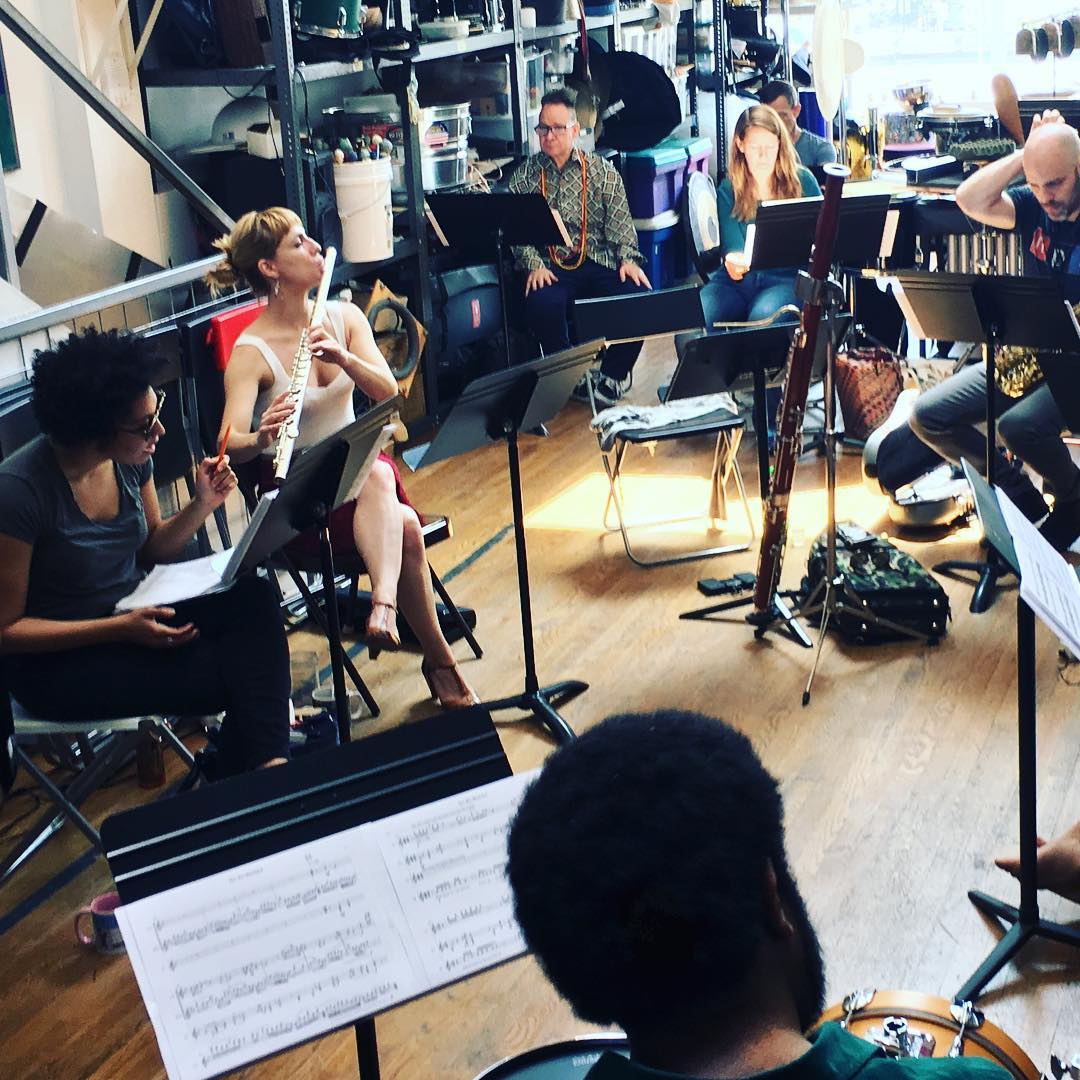 on piano and drums.
on piano and drums.
This was followed by the arrival of singer/composer/violinist Carla Kihlstedt to rehearse her At Night We Walk in Circles and Are Consumed by Fire. Carla thrilled Ojai audiences in 2009 with her unforgettable performance of Lisa Bielawa’s Kafka Songs for soprano and violin, in which Carla unbelievably performed both parts simultaneously. Carla’s work, a setting of dreams, involves herself as singer with a nine-piece ensemble of ICE, and will be performed Friday afternoon at 3pm. The work is magical.
Finally, I went to the Park Avenue Armory to hear two the first two rehearsals of Claude Vivier’s Kopernikus. This fiendishly difficult work is scored for seven vocalists (all from the remarkable Roomful of Teeth) and seven members of ICE, all masterfully conducted by Eric Dudley, also a member of Roomful of Teeth. As Christopher Hailey has written in the program book, “Kopernikus, more an oratorio than an opera, is a series of scenes depicting the journey of the alto soloist, Agni (the name of the Hindu god of fire), as she encounters, in death, a succession of mythical and historical gures (sung by the other six solo singers), including Lewis Carroll, Merlin, a sorceress, the Queen of the Night, a blind prophet, an old monk, Tristan and Isolde, Mozart, the Master of the Waters, and Copernicus and his mother. “ As Vivier himself writes, “these characters are perhaps the dreams that accompany Agni during her initiation and finally into her dematerialization.” The composer has urged “we not try to read any meaning into what happens but try to feel what’s happening. Not try to understand, but to enjoy what’s happening. It’s for this reason that it’s written in large part in an invented language of phonetic sounds”.
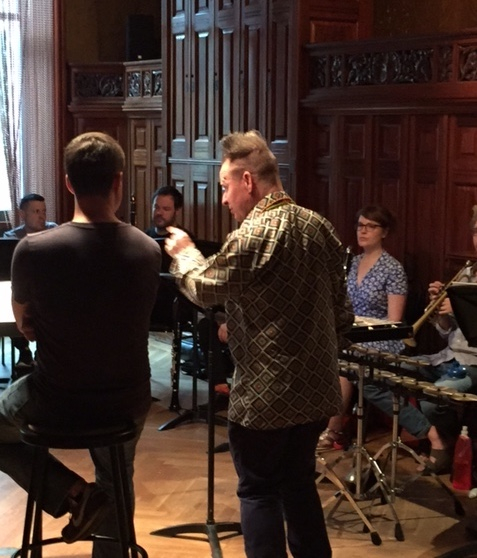
Despite the staggering difficulty and complexity of the music, I was totally unprepared to experience the sheer exhilarating beauty of the music live (I had only previously heard a DVD of a staged performance from Amsterdam), the result of the absolutely incredible virtuosity and commitment of Roomful of Teeth and ICE. Watching Peter Sellars coax, explain, and give meaning to text was a revelation. In planning this festival, Kopernikus was clearly a priority of Peter, who has long believed in the piece, but never done it before. I cannot wait to hear how the many rehearsals develop (there are three more full days of in New York, before three days in Ojai. The work is the final concert in the Libbey Bowl on Sunday June 12 before everyone heads off for the festival finale in Santa Paula.
We are in for some incredible musical experiences week after next!
– Tom Morris
Aruna Sairam, vocalist
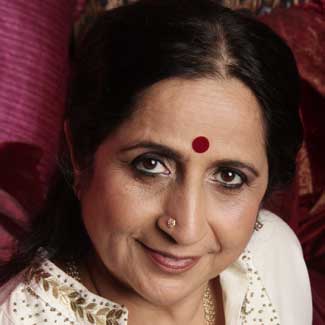
 Padma Shri Aruna Sairam, a renowned music ambassador of India, is one of the great classical music voices of India. Her style is rooted in tradition, yet continues to evolve. She belongs to the Veenai Dhanammal school of Carnatic music, known for its strict adherence to tradition and form. After her initial learning from her mother, who was a classical singer, Aruna, at the age of 10, became a disciple of the legendary T. Brinda. (T. Brinda is from the family of T. Balasaraswathi and T. Viswanathan—pioneers who brought South Indian classical music to the United States.) She was the first to introduce the Abhang, a distinctive folk music form from Western India, into a traditional Southern Indian Carnatic concert. She has also collaborated with leading musicians such as Dominique Vellard of France (classical liturgical, medieval, and Gregorian chants); Noureddine Tahiri of Morocco (Arabo-Andalusian music); Christian Bollmann of Germany (neo-classical music); Bollywood singer Shankar Mahadevan; mandolin virtuoso U.Srinivas, dancer Chandralekha; and multi-instrumentalist Ranjit Barot.
Padma Shri Aruna Sairam, a renowned music ambassador of India, is one of the great classical music voices of India. Her style is rooted in tradition, yet continues to evolve. She belongs to the Veenai Dhanammal school of Carnatic music, known for its strict adherence to tradition and form. After her initial learning from her mother, who was a classical singer, Aruna, at the age of 10, became a disciple of the legendary T. Brinda. (T. Brinda is from the family of T. Balasaraswathi and T. Viswanathan—pioneers who brought South Indian classical music to the United States.) She was the first to introduce the Abhang, a distinctive folk music form from Western India, into a traditional Southern Indian Carnatic concert. She has also collaborated with leading musicians such as Dominique Vellard of France (classical liturgical, medieval, and Gregorian chants); Noureddine Tahiri of Morocco (Arabo-Andalusian music); Christian Bollmann of Germany (neo-classical music); Bollywood singer Shankar Mahadevan; mandolin virtuoso U.Srinivas, dancer Chandralekha; and multi-instrumentalist Ranjit Barot.
Wadada Leo Smith, trumpet
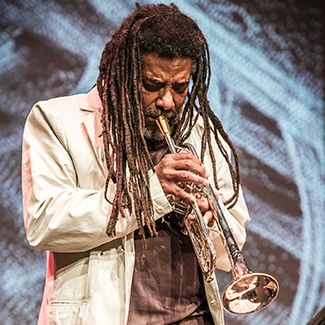
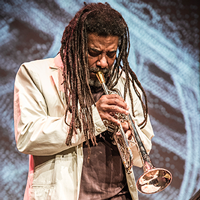 A trumpeter and multi-instrumentalist, composer, and improviser, Ishmael Wadada Leo Smith has been active in creative contemporary music for over forty years. His systemic music language Ankhrasmation is significant in his development as an artist and educator.
A trumpeter and multi-instrumentalist, composer, and improviser, Ishmael Wadada Leo Smith has been active in creative contemporary music for over forty years. His systemic music language Ankhrasmation is significant in his development as an artist and educator.
Born in Leland, Mississippi, Smith’s early musical life began in the high school concert and marching bands. At the age of thirteen, he became involved with the Delta Blues and Improvisation music traditions. He received his formal musical education with his stepfather Alex Wallace, the U.S. Military band program (1963), Sherwood School of Music (1967-69), and Wesleyan University (1975-76). Mr. Smith has studied a variety of music cultures: African, Japanese, Indonesian, European and American.
He has taught at the University of New Haven (1975-’76), the Creative Music Studio in Woodstock, NY (1975-’78), and Bard College (1987-’93). He is currently a faculty member at The Herb Alpert School of Music at California Institute of the Arts. He is the director of the African-American Improvisational Music program, and is a member of ASCAP, Chamber Music America, and the Association for the Advancement of Creative Musicians.
The Ojai Music Festival Makes Musicians of All Children

The Ojai Music Festival’s BRAVO program is laying the foundation for all of Ojai’s public school children to become musicians, starting at a very early age. In first and second grades, the students experience songs, games, rhythmic activities and simple sound/symbol matching. This year, BRAVO has expanded its reach to third graders, who are beginning to read musical notes. Weekly lessons are taught by Laura Walter using the principles of ETM (Education Through Music).
Next year, when these students are in fourth grade, they will be given the opportunity to sample a variety of instruments, provided by BRAVO. These early musical opportunities are paying dividends, as students are inspired to play instruments or sing in chorus at the intermediate, junior and senior high school level. Students who do not move into further music training have developed an appreciation of music which will serve them well throughout their lives.
According to Kathy Broesamle, ETM volunteer and grandparent of three public school music students, “it’s no wonder that Nordhoff High School has such a strong music program that encompasses classical, jazz, choral and theatrical elements. We are blessed with highly talented and devoted teachers, as well as students who, thanks to BRAVO have a solid music background.”
BRAVO, made possible by the Ojai Music Festival, is funded by community donations and the proceeds from the Holiday Home Look-in and Holiday Marketplace, which will be on November 12-13, 2016.
Watch Peter Sellars and 2016 Artists with our YouTube Playlist
Watch videos with 2016 Music Director Peter Sellars and other Festival artists who will be in Ojai this June! Use the playlist below to browse and play, or watch more videos from past years on our YouTube channel >>
Q2 Music and WQXR Present: Ojai Music Festival and Peter Sellars
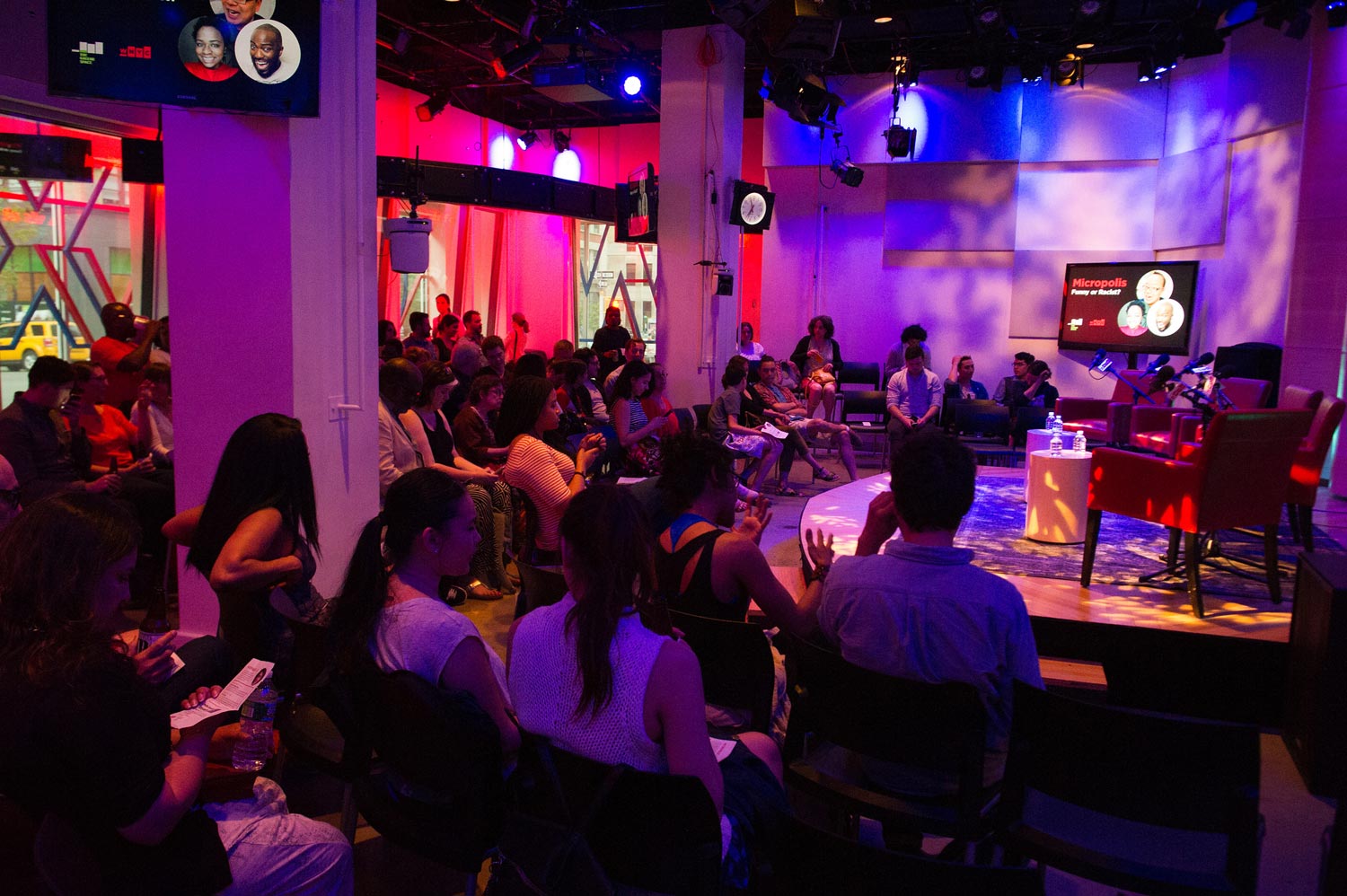


Q2 Music and WQXR
Present
Ojai Music Festival and Peter Sellars
Hosted by Helga Davis
Music and Conversation with 2016 Ojai Music Festival Director and Performing Artists
Friday, May 13, 2016
7:00pm
The Jerome L. Greene Performance Space
44 Charlton Street (corner of Varick Street)
New York, New York 10013
$30 general admission
Please join us for an evening of live performances from artists featured in the upcoming 2016 Ojai Music Festival and a conversation with the world-renowned music director, Peter Sellars. He will also share insights and anecdotes from a prodigious, colorful and unique career as a driving force in the creation of new music and bringing 20th and 21st century operas to the stage.
Champagne Reception to Follow
Kindly respond to Alex Spinks by Monday, May 2, 2016
646 829 4274 | [email protected]
New Collaboration With The Wallis

The Ojai Music Festival and the Wallis Annenberg Center for the Performing Arts are excited to announce An Evening With Peter Sellars, 2016 Ojai Festival Music Director with Alex Ross, on Monday, May 16, 2016 at 7:30pm.
The Wallis Annenberg Center for the Performing Arts joins forces with the Ojai Music Festival for the first time to present a lively Arts & Ideas conversation between groundbreaking opera and theater director Peter Sellars and The New Yorker music critic Alex Ross. The conversation will take place on the stage of the Bram Goldsmith Theater on Monday, May 16 at 7:30pm.
Sellars, Music Director of the 2016 Ojai Music Festival in June, has gained international renown for his transformative interpretations of artistic masterpieces such as John Adams’ Nixon in China and The Death of Klinghoffer, as well as for his distinctive collaborations with an extraordinary range of artists including Finnish composer Kaija Saariaho, dance pioneer Reggie Gray and Nobel Prize-winning novelist Toni Morrison. Ross, a 2008 MacArthur “Genius” Fellow, is the author of The Rest is Noise: Listening to the Twentieth Century, winner of the National Book Critics Circle Award and finalist for the Pulitzer Prize.
“I am delighted that we can welcome Peter and Alex to our stage for this event,” said Paul Crewes, The Wallis’ new Artistic Director who takes the reins full time next month in April 2016. “Our Arts & Ideas series has enjoyed great success this season, and our exciting new affiliation with the Ojai Music Festival will surely deliver another great night captivating discussion between these two brilliant men.”
“We are delighted to be collaborating with The Wallis for this exciting event with Peter Sellars, our 2016 Music Director and a passionate advocate for the intersection of music and community, and Alex Ross, music critic of The New Yorker and acclaimed writer on music of our time,” expressed Thomas W. Morris, Artistic Director of the Ojai Music Festival are now available for $25 – $35. For more information or to purchase tickets, visit TheWallis.org, call 310.746.4000, or stop by in person at the Wallis Annenberg Center for the Performing Arts Ticket Services located at 9390 N. Santa Monica Blvd., Beverly Hills, CA 90210. Ticket prices subject to change.
Creating And Connecting With Music
Imagine a world where wonder happens every day. March is “Music in the Schools Month” and the Ojai Music Festival is bringing that to life. The Festival’s BRAVO Education and Community Program brings the joy of music into classrooms throughout the Ojai Valley and two Ventura area schools with the Imagine Concert, the Music Van, Flutes Across the World, Artists-in-Residence programs, and weekly Education Through Music workshops in every Ojai Unified Elementary school. The children are filled with wonder!
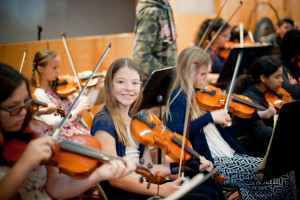 When we create music, the brain uses many networks to process phrases, melody, rhythm, and timbre, or tone color. The brain’s auditory areas light up, but so do areas responsible for motor skills, emotions, and creativity. Music employs many sensory systems at once. We are seeing, we are hearing, we are saying, we are doing. Because of this, memory and intelligence improve.
When we create music, the brain uses many networks to process phrases, melody, rhythm, and timbre, or tone color. The brain’s auditory areas light up, but so do areas responsible for motor skills, emotions, and creativity. Music employs many sensory systems at once. We are seeing, we are hearing, we are saying, we are doing. Because of this, memory and intelligence improve.
Luke Martin, 2016 Steven Rothenberg Internship Fellow
We are thrilled to announce Luke Martin as the 2016 Steven Rothenberg Internship Fellow. Luke is a composer pursuing his M.F.A. at CalArts and was first an intern at the 2015 Festival. The Rothenberg Fellow and Festival Internship Program are made possible by the generous support of Fred and Ila Rothenberg, in memory of their son Steven Rothenberg.
Luke Martin (b. 1992) is an experimental composer, musician, and poet currently living in Valencia, CA. His work focuses on the concepts of liminality, neutrality, and  fragility and is primarily interested in exploring limits of perception. More specifically, he is interested in the use of silence, listening, text, and sound as equally considered elements in the compositional practice; for instance, the composer’s task is not only to consider the parameters of determined sound making (both text and instrumental), but also the parameters of how we listen, and how we may interact with and frame silence. The composer, then, seeks to create situations of possible events which the audience, performer(s), and composer all experience concurrently. Further, Luke considers the social and political disposition of a performance a very connected aspect of his work: how can one critically think about the hierarchical roles and power relations at work in a given performance, and then potentially subvert or support them. Recently inspired by David Dunn’s notations for listening and Lasse Thoresen’s spectromorphological analysis of electronic music and sound, Luke is in the beginning stages of developing a notation for silence (i.e., incidental sounds, contingency).
fragility and is primarily interested in exploring limits of perception. More specifically, he is interested in the use of silence, listening, text, and sound as equally considered elements in the compositional practice; for instance, the composer’s task is not only to consider the parameters of determined sound making (both text and instrumental), but also the parameters of how we listen, and how we may interact with and frame silence. The composer, then, seeks to create situations of possible events which the audience, performer(s), and composer all experience concurrently. Further, Luke considers the social and political disposition of a performance a very connected aspect of his work: how can one critically think about the hierarchical roles and power relations at work in a given performance, and then potentially subvert or support them. Recently inspired by David Dunn’s notations for listening and Lasse Thoresen’s spectromorphological analysis of electronic music and sound, Luke is in the beginning stages of developing a notation for silence (i.e., incidental sounds, contingency).
Among his many influences, Luke is particularly inspired by the work of Samuel Beckett, John Cage, Morton Feldman, Peter Ablinger, Luigi Nono, the Wandelweiser Collective, and Gertrude Stein. He is currently in his final year of the M.F.A. music composition program at California Institute of the Arts, studying with Michael Pisaro. Originally from Massachusetts, Luke received his B.A. in English and Music from Colby College in Maine, graduating magna cum laude, phi beta kappa, and with honors in music composition/theory. He has received awards ranging from a Kennedy Center Award for Music Composition to the Mollie Seltzer Yett Prize for Music Academics. Aside from composing, Luke performs in a noise/no-input feedback duo ‘sinecure,’ plays tennis, guitar in both jazz and experimental music settings, enjoys canoeing with family and friends in Maine, and always appreciates a good game of cribbage.
Music Director Peter Sellars Statement on the 2016 Festival
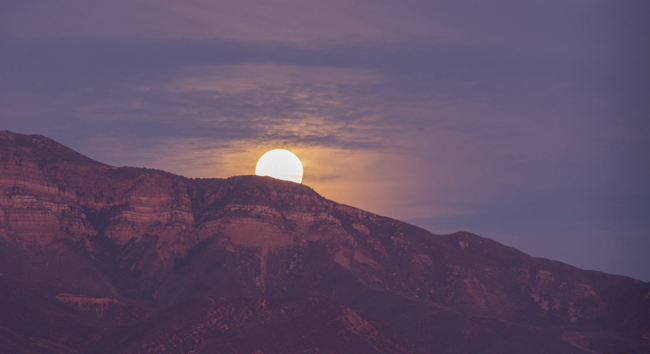
“The Ojai Valley has long been recognized as a rare and beautiful natural site that invites retreat, renewal, and regeneration, from Chumash ceremonial life to Krishnamurti’s legendary talks under the trees. The valley has both a grandeur and a human scale that inspire and allow the deepest human questions to resonate, and create a setting for the most personal search for answers. The magical play of light across the canyon and the heady aroma of orange blossoms bring the senses to life, awaken the mind, and create a profound aura of openness and well-being.
Music incites many of the same thoughts and emotions, with similar immensity and intimacy and awe. The 70th Ojai Music Festival will gather this powerful energy and spirit of inquiry and reflection into a weekend of peak experiences and secret revelations.
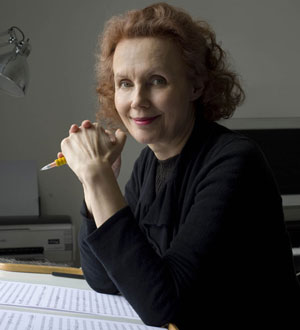 For the first time the composer Kaija Saariaho will come to Ojai. We will feature two of her most potent and visionary works. Her new chamber version of The Passion of Simone, a meditation on the life of the courageous French philosopher Simone Weil, written to a wise and humane text by Amin Maalouf, will receive its American premiere with the extraordinary young soprano Julia Bullock. It is a work of startling integrity and permanent challenge in dark times, with a flame of hope that burns brightly and intensely in the darkness. The fierce commitment and brilliance of that flame will be embodied by ICE and Roomful of Teeth, conducted by Joana Carneiro.
For the first time the composer Kaija Saariaho will come to Ojai. We will feature two of her most potent and visionary works. Her new chamber version of The Passion of Simone, a meditation on the life of the courageous French philosopher Simone Weil, written to a wise and humane text by Amin Maalouf, will receive its American premiere with the extraordinary young soprano Julia Bullock. It is a work of startling integrity and permanent challenge in dark times, with a flame of hope that burns brightly and intensely in the darkness. The fierce commitment and brilliance of that flame will be embodied by ICE and Roomful of Teeth, conducted by Joana Carneiro.
Kaija Saariho’s newest operatic creation is a sequence of two Japanese Noh plays in versions by Ezra Pound, entitled Only the Sound Remains. Again Ojai will offer the American premiere. These two plays will be performed in the tradition of Japanese Takigi Noh, outdoors, lightly held in the gentle grasp of a protective arroyo under a radiant early morning sky for Feather Mantle, a play of illumination, transcendence and evanescence, and just before midnight under an intense starlit sky for Always Strong, the harrowing and haunted story of a young warrior’s spirit struggling to return to life on earth.
This year’s festival will have its rituals. Mornings will begin with liberating and exhilarating Sonic Meditations by Pauline Oliveros realized by the glorious and willing musicians of ICE. At mid-day there will be concerts of the kaleidoscopic and more rarely performed chamber works of Kaija Saariaho. The later afternoons will offer music of longing and consolation. Caroline Shaw’s works will be paired with Carla Kihlstedt’s phosphorescent exploration of dream worlds, At Night We Walk in Circles and Are Consumed by Fire, and Du Yun’s peeling away the surface of the world in An Empty Garlic.
Team Digs At Work
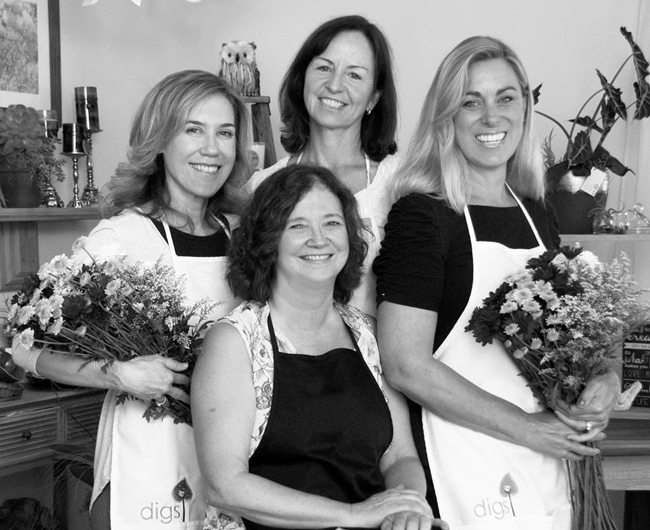
Lynn Malone and the design team at Digs Floral and Botanic Designs in Ojai is thrilled to once again put their talents and imagination to work for the Holiday Home Look In. New to the tour last year, Digs went all out to create masterful holiday floral designs for a Rancho Matilija home. This year, the Digs design team returns by popular demand, to embellish Blue Heron, another beautiful home in Rancho Matilija – this time with an array of multicultural holiday decor. When asked which holiday they would like to focus on, Digs’ designers agreed that they are truly inspired by them all. The florals throughout the home will honor several holiday traditions, some of which have roots in other parts of the world. The homeowner’s travels, experiences and interior design aesthetic have also inspired the floral décor.
Once again, Digs designers hope to inspire guests with unique decorating ideas for the upcoming holidays. And, if DIY is not your idea of holiday fun, their designers are always happy to be of assistance. Some of the creations you’ll see on the tour will be available at Digs throughout the Holiday Season.
Welcome Back Party with Peter Sellars Photo Gallery
Thank you to everyone who attended our ‘Welcome Back’ party with 2016 Music Director Peter Sellars. It was wonderful to see so many of you again – and to meet a few new faces as well! Special thanks to hosts Fred Fisher and Jennie Prebor for their warm hospitality. Below are a few photos from the event, taken by Louis Almaraz. If you would like a copy of any, email [email protected].
Welcome Laura Walter – New Education Coordinator
The Festival warmly welcomes Laura Walter as our new Education Coordinator. Laura is taking over duties from Andy Radford, who has headed BRAVO for the past 12 years. Andy will remain as the Festival’s Intern Coordinator and Laura take charge of planning, organizing, and scheduling BRAVO’s activities in local classrooms and the Ojai community.
 Laura writes, “What an honor to be involved with the Ojai Music Festival as the new Education Coordinator! Andy Radford has done a wonderful job of enriching the lives of the community, and I look forward to continuing his good work. Through the avenues of singing, percussion, flutes, and learning about the music of the Chumash culture, the BRAVO program acts as an important voice, bringing many enriching experiences of music to the people of the Ojai Valley and Ventura County. I’m so excited to be able to contribute! Music helps us feel a larger whole, a part of something bigger than ourselves. When beauty is created through feeling and thinking, an elevation occurs, a greater awareness and appreciation. Our world is better for it.”
Laura writes, “What an honor to be involved with the Ojai Music Festival as the new Education Coordinator! Andy Radford has done a wonderful job of enriching the lives of the community, and I look forward to continuing his good work. Through the avenues of singing, percussion, flutes, and learning about the music of the Chumash culture, the BRAVO program acts as an important voice, bringing many enriching experiences of music to the people of the Ojai Valley and Ventura County. I’m so excited to be able to contribute! Music helps us feel a larger whole, a part of something bigger than ourselves. When beauty is created through feeling and thinking, an elevation occurs, a greater awareness and appreciation. Our world is better for it.”
2016 Festival Update from Artistic Director Thomas W. Morris
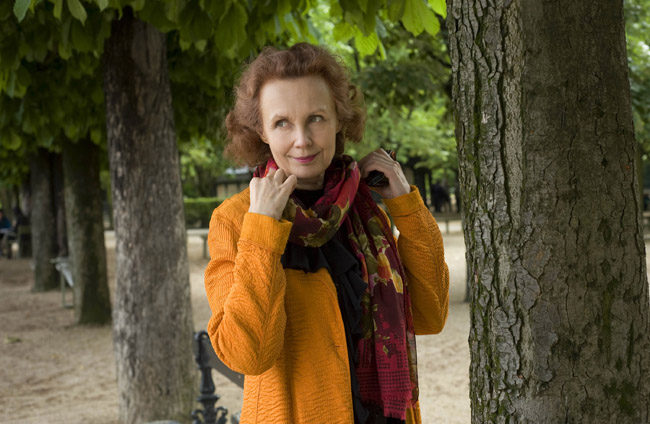
This past week, Artistic Director Thomas W. Morris met with 2016 Music Director Peter Sellars and soprano Julia Bullock as they rehearsed Kaija Saariaho’s La Passion de Simone. He wrote us a brief update on the project, its history, and the plans for Ojai…
Kaija Saariaho’s great work La Passion de Simone was written in 2006 for large symphony orchestra, large chorus and soprano soloist. Its first performances, with Dawn Upshaw, were staged by Peter Sellars in numerous cities around the world. In 2014, Saariaho, as a centerpiece of the Festival Saint-Denis in Paris, made a new version of the piece for an ensemble of nineteen players, a small chorus of four to eight singers, and soprano soloist. The work, conceived as a “Musical Journey in Fifteen Stations”, assumes the form of a contemporary passion play, interpreting the life and thought of the French philosopher Simone Weil. The original libretto by French author Amin Maalouf constitutes the majority of the oratorio’s text, supplemented by spoken fragments from Weil’s work.
Davóne Tines, bass-baritone
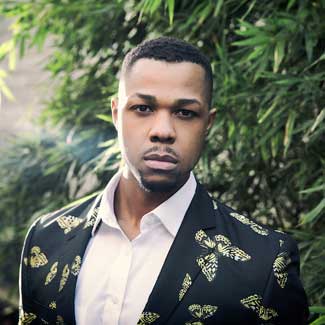
 Davóne Tines, deemed a “… charismatic, full-voiced bass-baritone …” by the New York Times, is building an international career commanding a broad spectrum of opera and concert performance. This past season included appearances with the Boston Pops in Symphony Hall and at Tanglewood, where he was a Tanglewood Music Center Fellow, as well as a debut with the American Repertory Theater in the world premiere of Matthew Aucoin’s opera Crossing, directed by multiple Tony Award–winning director Diane Paulus, for which the Wall Street Journal called him a “glowing bass-baritone” and the Stylus Music Journal said he “… brought the house down with his eloquent and painful singing” in the leading role of Freddie Stowers.
Davóne Tines, deemed a “… charismatic, full-voiced bass-baritone …” by the New York Times, is building an international career commanding a broad spectrum of opera and concert performance. This past season included appearances with the Boston Pops in Symphony Hall and at Tanglewood, where he was a Tanglewood Music Center Fellow, as well as a debut with the American Repertory Theater in the world premiere of Matthew Aucoin’s opera Crossing, directed by multiple Tony Award–winning director Diane Paulus, for which the Wall Street Journal called him a “glowing bass-baritone” and the Stylus Music Journal said he “… brought the house down with his eloquent and painful singing” in the leading role of Freddie Stowers.
Relive the 2015 Festival through our photo gallery
Thank you for joining us for an incredibly memorable week of adventurous music making and community. Relive the moments with our 2015 Festival photo galleries of concerts and scenes from around Libbey Bowl.
2016 Festival
2016 Music Director Peter Sellars
frames programming for 70th Ojai Music Festival
June 9-12, 2016
The Ojai Music Festival marks its 70th year in 2016 and to curate this milestone, Artistic Director Thomas W. Morris has invited opera and theater director Peter Sellars to serve as Music Director. For the 2016 Festival, Peter Sellars is shaping a program deeply rooted in the cultures of Ojai, starting new traditions and setting out fresh agendas for the 70 years to come. The Festival will take place June 9-12, 2016.
As the 69th Ojai Music Festival opens this week (June 10-14, 2015) with Music Director Steven Schick, the Festival’s 2016 Music Director Peter Sellars shares thoughts on his distinctive approach to programming the Festival:
John Luther Adams on “Sila: The Breath of the World”
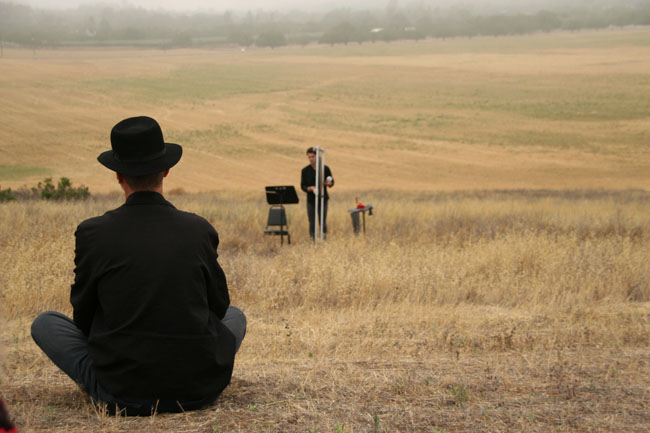
Composer John Luther Adams is no stranger to Ojai, with performances of his works in 2012 and 2013, including the ‘Inuksuit‘, featuring musicians placed throughout Libbey Park. Adams returns to Ojai this year for the West Coast Premiere of his new work ‘Sila: The Breath of the World’. Here he discusses the genesis of the piece and the significant differences in pieces written to be performed and heard outdoors.
“Songs are thoughts which are sung out with the breath when people let
themselves be moved by a great force…”
– Orpingalik, a Netsilik elder
In Inuit tradition the spirit that animates all things is sila, the breath of
the world. Sila is the wind and the weather, the forces of nature. But
it’s also something more. Sila is intelligence. It’s consciousness. It’s
our awareness of the world around us, and the world’s awareness of
us.
Over the past four decades most of my music has been inspired by the
outdoors, but heard indoors. With Inuksuit – for nine to ninety-nine
percussionists – I finally composed music intended from the start to be
performed and heard outdoors. In Sila: The Breath of the World, I
continue this exploration with a full orchestral palette.
Happy Anniversary HumanArts!
The Ojai Music Festival is fortunate to be part of a strong community of residents and businesses supporting the arts in the Ojai Valley. One of our longtime friends is HumanArts Gallery located in the downtown Arcade. Owners Hallie and Stan Katz share their story of how intertwined the Festival is with their move to Ojai.
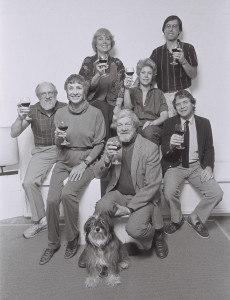 It was May 30, 1975 and most of the action was in Libbey Park where Michael Tilson Thomas was preparing to conduct the Ojai Music Festival. In a much smaller venue across the street there was another buzz happening — a new gallery in town was hosting its grand opening –- it was one of the only galleries in town at that time! Three couples, fairly new to town, decided to show an eclectic mix of pottery, jewelry, paintings, and sculpture, some of which they themselves made.
It was May 30, 1975 and most of the action was in Libbey Park where Michael Tilson Thomas was preparing to conduct the Ojai Music Festival. In a much smaller venue across the street there was another buzz happening — a new gallery in town was hosting its grand opening –- it was one of the only galleries in town at that time! Three couples, fairly new to town, decided to show an eclectic mix of pottery, jewelry, paintings, and sculpture, some of which they themselves made.
Truly one of the first places dedicated to contemporary fine craft in Southern California, it was known then as Running Ridge Gallery. The original partners were Bob and Barbara Grabowski, Bob’s sister Ruth Farnham and her husband John, and Jett and Sharon Spencer. Bob, Jett, and Sharon made jewelry; Ruth was a painter; and John was a sculptor. Barbara was the business manager.
Christina McPhee: How Ojai Inspires Me As An Artist
The audience members of the Ojai Music Festival are as eclectic, imaginative and passionate as the music performed and the artists who are engaged in the creative process. Once such patron is Christina McPhee, visual artist from the Central Coast, who shared her work with us inspired by the 2014 Festival.
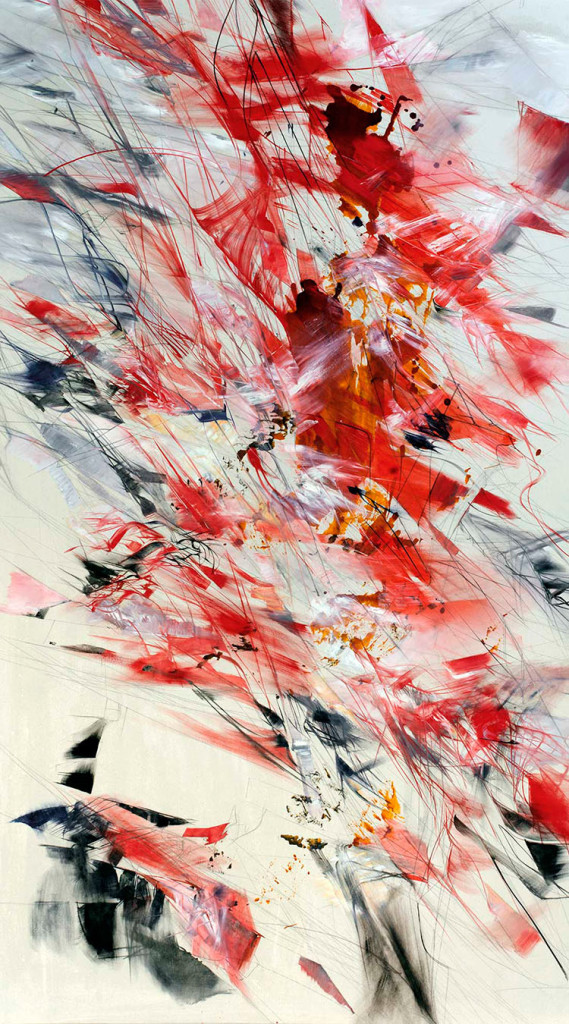
The Muslin-Drum // Ligeti Iterations :
As a child, I found sanctuary in piano practice. Each evening the required hour came with the delight of the fall of the keys, the fascination of synaesthesia’s colors with chromatic chords, and escape from external pressures. For no audience but my own brain, my ears connected with digits, and with structures of flight. Later I sought to materialize this experience in painting.
With my partner I built canvasses in translucent muslin, coated in clear, slightly crystalline rabbit skin glue, with taut surface like a drum. From the first the support and surface conditions set up a performance situation around color-shapes, linear thresholds and tensions of the stretched canvas. Interacting with these constraints set me into a graphic predictive process, to ramify lines from sound. The delicate surfaces pinged as the graphite slides across the rabbit skin. Dyes threw across the slightly glittering crystals of rabbit-skin embedded in the glue ground. The soft swish of liner brush extended murmur and glissando. Tcherepnin, Varese, Cage and Harrison crossed through this matrix. None stayed as long as Ligeti. Hundreds of repeats, listening to the cd of György Ligeti’s Piano Etudes, Books 1 and 2, as performed by Jeremy Denk in a Nonesuch recording of 2012, cast the studies into iterative material abstractions. Then I heard Denk play them live in concert at the Ojai Music Festival, in June 2014. An indelible impression, almost, a neurologic imprint…Elements of surprise, hurling passages, glissandos, rushes and stillnesses, darknesses leaching into light, shapes tumbling and subsisting in secret rhythms— these formal and performance incidents translate a code for a kinetic action through the instrument of the body onto the radiant surface.
10 Questions with John Luther Adams
Written by M. Sean Ryan with permission from BMI.
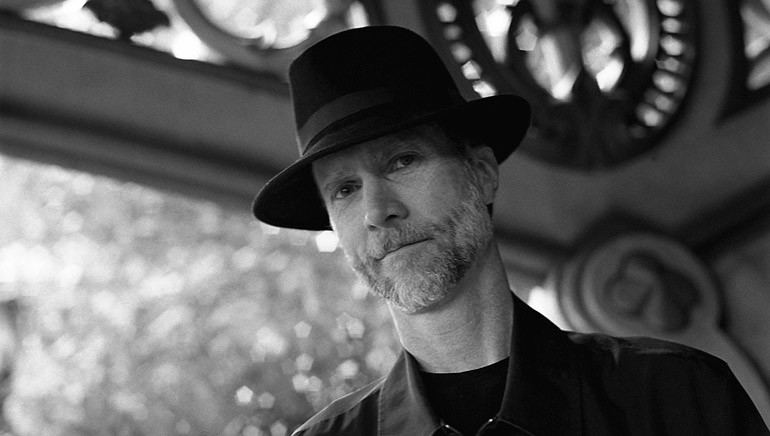
In writing or analyzing a piece of music, the notion of space is both multifaceted and unavoidable. For John Luther Adams, it is the root. His environmentally-minded compositions aren’t just inspired by geography and places he finds meaningful. Sometimes their performance demands musicians forgo the stage, scattering strategically instead around vast indoor and outdoor venues.
In this way, Adams has garnered a reputation for highlighting how we fit in to the world around us, musical or not. Pieces like “Inuksuit,” or, more recently, “Sila,” continue to redefine the immediate environment in which they’re performed, while his titanic opus “Become Ocean” has earned him two GRAMMY nominations as well as last year’s Pulitzer Prize in music. In addition to these prestigious honors, Columbia University’s School of the Arts recently announced that Adams will be awarded their $50,000 William Schuman Award this fall. The award recognizes “the lifetime achievement of an American composer whose works have been widely performed and generally acknowledged to be of lasting significance.”
On a recent call from New York City, the 62-year-old Adams opened up about the road that’s led him to his current standing as a world-renowned composer.
How did your relationship with BMI begin?
It would go back to the 1980s. I was a young composer thinking about affiliating with a performing rights organization, and ultimately what persuaded me — what did it was Ralph Jackson. A couple of years ago I wrote a piece on Ralph’s retirement singing his praises and talking about who he is and the difference he has made, not only in my life but in the lives of so many other composers.
In the larger musical landscape of new music, classical music, contemporary concert music — whatever you call this stuff that I’m involved with — Ralph is truly a force of nature. Now Deirdre Chadwick has taken over and like Ralph she’s an oboist. And like Ralph she’s a strong personality who cares passionately about this music. I feel really lucky to be working with her now.
In that stage of your career, when you moved to Alaska in the late ‘70s, your focus was political. Was music on the backburner?
Nothing took a backseat to anything else. I thought I could do it all: I thought I could be a full time environmental crusader; I thought I could live like Henry David Thoreau in the woods; I thought I could be a working composer, and I thought I could have a serious personal relationship and also play in the Fairbank Symphony. It took me a decade or so to realize that I had to make some choices. It was a very heady time. To be young and idealistic in Alaska in the late ‘70s and then into the early ‘80s — I wouldn’t trade it for anything.
Q & A With Festival Producer Elaine Martone
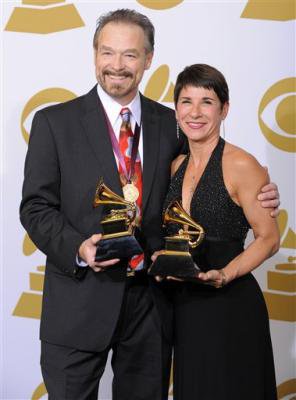
Congratulations to Festival Producer Elaine Martone for her Grammy nomination for Producer of the Year in the classical music category!
Elaine was brought on as the Festival producer in 2012. Prior to joining us, she was executive vice president of production at Telarc Records for 29 years. As a key executive in planning and creative decision-making, she managed more than 1,500 projects and was accountable for more than $6 million annually in production costs. A world-class producer, she is a five-time Grammy Award winner in both Classical and Jazz.
Born in Rochester, New York, Elaine moved to Cleveland to study oboe with aspirations of playing with a symphony orchestra. A graduate of Ithaca College with a Bachelor of Music degree, she was taught the basics of the industry by Telarc founders Robert Woods and Jack Renner, quickly grasping what determined the famed Telarc sound and becoming an accomplished editor and an integral part of the management team. Elaine has served as producer on more than 200 recordings, both classical and jazz, including those by the Atlanta Symphony Orchestra with Robert Spano and Robert Shaw, The Cleveland Orchestra with Franz Welser-Möst, the Philharmonia Orchestra with Ben Zander and jazz greats Ray Brown, Dave Brubeck, Oscar Peterson, Tierney Sutton, and McCoy Tyner to name a few.
Elaine was executive director of Spring for Music produced at Carnegie Hall with founding directors Thomas W. Morris, David V. Foster and Mary Lou Falcone, music industry legends.
With her husband, Robert Woods, she has formed a music enterprise, Sonarc Music, and is pursuing her passion, producing great music and musicians, as well as working with talented young people. She was a founding board member of Red {An Orchestra}, which completed seven seasons in Cleveland, Ohio.

